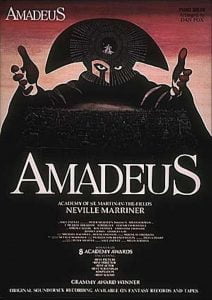Mozart – Requiem in D minor K 626 1791 Sequentia Lacrimosa Dies Illa piano solo arr. (sheet music)
Come join us now, and enjoy playing your beloved music and browse through great scores of every level and styles!
Can’t find the songbook you’re looking for? Please, email us at: sheetmusiclibrarypdf@gmail.com We’d like to help you!

The Lacrimosa is the final part of the Sequentia Dies Irae. It is used by many composers such as Mozart (KV 626), Berlioz or Verdi in their masses for the dead or requiems.
Best Sheet Music download from our Library.
Text
Lacrimosa dies illa
Qua resurget ex favilla
Judicandus homo reus.
Huic ergo parce, Deus:
Pie Jesu Domine,
Dona eis requiem. Amen.
English translation
Full of tears will be that day
When from the ashes shall arise
The guilty man to be judged;
Therefore spare him, O God,
Merciful Lord Jesus,
Grant them eternal rest. Amen.
Please, subscribe to our Library.
If you are already a subscriber, please, check our NEW SCORES’ page every month for new sheet music. THANK YOU!
The Requiem in D minor (KV 626) from 1791 is Wolfgang Amadeus Mozart’s last composition. Although only about two-thirds of it is actually by Mozart, it is one of his most popular and highly regarded works. Mozart died during the composition.
As it was a commissioned work, Joseph Eybler and Franz Xaver Süssmayr, a pupil of Mozart, completed the Requiem on behalf of Constanze Mozart, the composer’s widow. The history of the origins and the quality of the subsequent additions have been hotly debated for a long time. The unusual circumstances of the commission for the composition and the temporal connection between this Mass and Mozart’s untimely death have also stimulated the creation of lush myths.
The Dies irae enters powerfully, with full orchestra and choir, without an introduction. The powerful choral calls are grounded and reinforced by a tremolo in the orchestra and syncopated interjections in the chorus breaks. This is followed by rapid chromatic semiquaver runs of the first violins up to renewed choral entries.
An effective passage is the three-times repeated ‘trembling’ alternation of G sharp and A in eighth notes, performed in unison by basso continuo, violins in a low register and choir bass, to the text Quantus tremor est futurus (‘What trembling will be’, namely on the Dies irae, on the day of the Last Judgment) – Mozart was apparently inspired by the text here.
This also applies to the next movement Tuba mirum, which – in accordance with the usual German translation of tuba mit Trombone – is introduced by broken triads of the unaccompanied solo trombone in B flat major, a mediant of D minor. After two bars the solo bass comes in imitatively. A fermata follows in bar 7 – the only place that could be considered for a solo cadenza.
The solo tenor enters the final crotchet of the bass solo, followed in a similar fashion by solo alto and solo soprano, each in quite dramatic fashion. With the text Cum vix justus sit securus (“When hardly the just one is safe”), the piece transitions into a homophonic movement of the four solo voices, which articulate “cum” and “vix” unaccompanied on the 1st and 3rd bar emphasis, while on the “ weak” beats 2 and 4 violins and continuo answer; this “sticking” (which could be interpreted from the text as a sticking before the Last Judgment) sounds once muted (sotto voce), then forte and immediately piano again, whereupon a crescendo leads into the final cadence.

A sharply dotted descending sequence of tones in the orchestra heralds the “king of frightening majesty” (Rex tremendae majestatis), who is invoked three times with powerful choral chords on the syllable Rex in the orchestral rests. Then the choir takes over the dotted rhythm of the orchestra, which in baroque music was known as the “topos of the ruler’s homage” (Wolff).
The movement has only 22 bars, but is very varied over this short distance: homophonic and contrapuntal choral passages alternate several times and finally lead to an almost unaccompanied choral cadence, which in turn ends in a third-less sound on D (as in the Kyrie).
What follows is the longest movement in the work, at 130 bars (and the first in odd meter, namely in three-quarter time), the Recordare, in which no fewer than six stanzas of the Dies irae are used. In a thirteen-bar introduction, the basset horns first present the sustained theme, after which the strings answer it with descending scale runs that have already been heard in the cellos.
This introduction is reminiscent of the beginning of the work as a whole, as are the rhythmic and melodic shifts (bassett-horn I enters a bar after basset-horn II, but a whole tone higher; violins II shifted by a quarter compared to violins I, etc.). Then the solo quartet sets in, in ever new combinations of voices, with the ever-newly differentiated antiphonal patterns between the voices being particularly impressive.
As Erich Prieger noted in 1910, the Recordare’s thematic head is largely identical to a passage from Wilhelm Friedemann Bach’s Sinfonia in D minor (= Adagio and Fugue for two transverse flutes, strings and continuo, Fk 65, bar 32ff). Unlike the Introitus and Kyrie, however, Christoph Wolff does not use a conscious quotation here, but rather a borrowing from the “musical vocabulary customary at the time”.
Browse in the Library:
Or browse in the categories menus & download the Library Catalog PDF:
